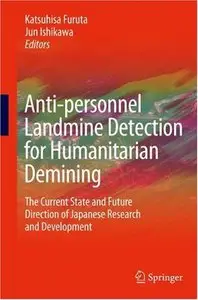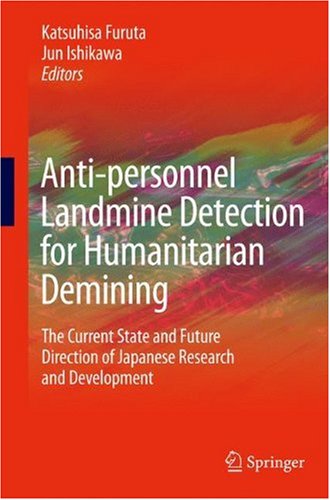Katsuhisa Furuta, Jun Ishikawa, "Anti-personnel Landmine Detection for Humanitarian Demining"
Springer | 2009 | ISBN: 1848823452 | 211 pages | PDF | 6,1 MB
Springer | 2009 | ISBN: 1848823452 | 211 pages | PDF | 6,1 MB
There are more than 70 countries in the world that suffer from the presence of landmines. Annually, between 15,000 and 20,000 people are killed or injured by these mines so there is a pressing need for advances in technology to help to remove them.
Anti-personnel Landmine Detection for Humanitarian Demining reports on state-of-the-art technologies developed during a Japanese National Research Project which ran from 2002–2007. The conventional, and often reliable, method of landmine detection is to use a metal detector to pick up small amounts of metal within the mine. Unfortunately, minefields are frequently strewn with small metal fragments which can camouflage landmines greatly hindering progress using this form of demining. The challenge, then, is to develop practical detection systems that can discriminate between anti-personnel (AP) landmines and randomly scattered innocent metal fragments.
The results of research proposals from universities and industrial sources adopted by the Japan Science and Technology Agency are presented here. This book concentrates on various aspects of three main approaches to AP mine detection:
• enhancing and confirming the results of metal-detection scans using ground penetrating radar (GPR);
• using robot vehicles and manipulators to operate within minefields remotely; and
• methods of sensing the explosives within mines.
Basic results are presented in the fields of GPR, nuclear quadrupole resonance, neutron thermal analysis and biosensors. The integration of these methods for workable robot operation is demonstrated.
The project was carried out in conjunction with mine action centers in Croatia, Cambodia and Afghanistan and evaluation data from field trials of the technologies are also reported.
The results presented by Professor Furuta and his colleagues will be most useful to anyone who is involved in the use or production of technical equipment associated with landmine removal. In addition, academics researching advances in this field and those working in remote sensing, mechatronics and robotics will find much to interest them and a co-ordinated body of work with which to expand their own studies.
Not all books on AvaxHome appear on the homepage.
In order not to miss many of them follow ebooks section (see top of each page on AH)
and visit my blog too :)
In order not to miss many of them follow ebooks section (see top of each page on AH)
and visit my blog too :)
NO MIRRORS according to the rules



